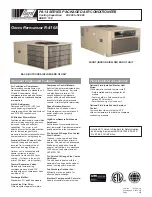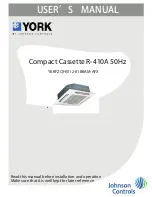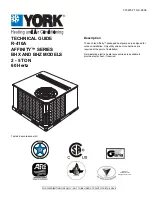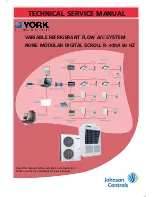
14
Indoor Unit
1. Use the heat insulation material for the refrigerant piping which has an excellent heat-resistance (over 120°C).
2. Precautions in high humidity circumstance:
This air conditioner has been tested according to the "ISO
Conditions with Mist" and confirmed that there is not any
default. However, if it is operated for a long time in high
humid atmosphere (dew point temperature: more than
23°C), water drops are liable to fall. In this case, add heat
insulation material according to the following procedure:
• Heat insulation material to be prepared... EPDM (Ethylene
Propylene Diene Methylene)-over 120°C
the heat-resistance temperature.
• Add the insulation over 10mm thickness at high humidity
environment.
After inspecting pipe joints for gas leakage, be sure to insulate
wit the accessory joint insulation for fitting while referrig to the
figure. (Fasten both ends with clamps)
Installation
Indoor unit
Thermal insulator
(accessory)
Fastening band
(accessory)
Insulation for fitting
(accessory)
(For liquid piped)
Insulation for fitting
(accessory)
(For gas piped)
liquid pipe
Refrigerant piping
Clamp (6)
(4 accessory)
HEAT INSULATION
Drain piping work
• Drain piping must have downward (1/50 to 1/100): be sure not to provide up-and-down slope to prevent reverse
flow.
• During drain piping connection, be careful not to exert extra force on the drain port on the indoor unit.
• The outside diameter of the drain connection on the inddor unit is 21mm.
• Be sure to install heat insulation on the drain piping
• If converging multiple dranin pipes, install according to the procedure shown below.
• After piping work is finished check drainage flows smothly.
• Be sure to insulate all indoor units.
Piping material: Polyvinyl chloride pipe 25mm and
pipe fittings
Heat insulation material: Polyethylene foam with
thickness more than 10 mm.
Slope downwards at a gradient
of at least 1/100
Summary of Contents for CEA Series
Page 24: ...24 Indoor Unit ...











































